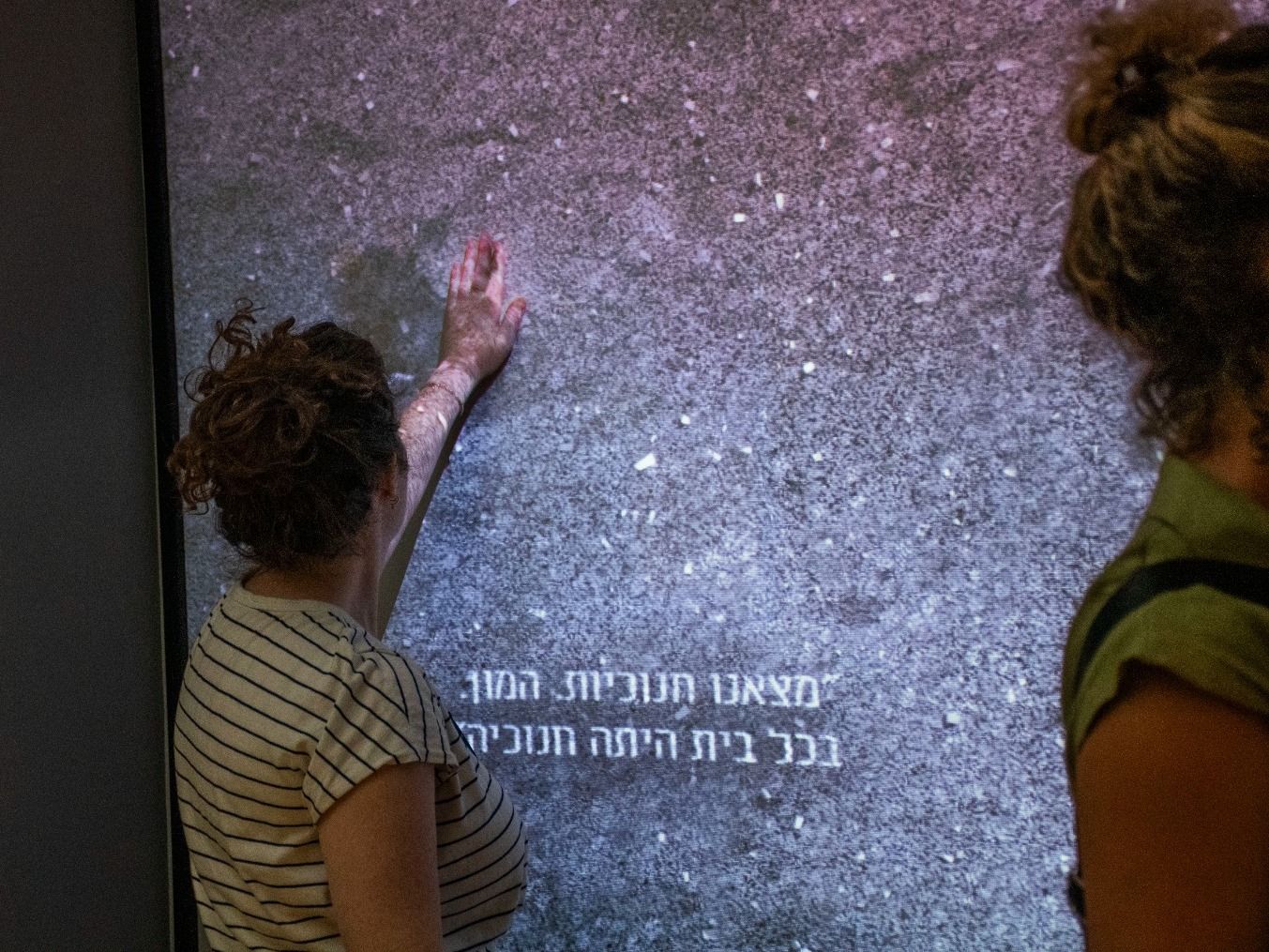
The Alejandro Weinstein Crenovich Exhibition, Rising from the Ashes: Archaeology in a National Crisis, opened this week at the Jay and Jeanie Schottenstein National Campus for the Archaeology of Israel in Jerusalem. This is the first time that the extraordinary involvement of the Israel Antiquities Authority in the Swords of Iron War is being presented to the public. This powerful exhibition tells the painful story of the October 7th attack on the Gaza Envelope communities through unprecedented documentation of those events, alongside the unique role played by the Israel Antiquities Authority – the official body entrusted with the preservation of cultural assets from the past, which found itself operating in the scene of modern destruction, using its arsenal of archaeological tools and experts to decipher the present.
While archaeologists have always studied, examined and analyzed sites thousands of years old, in this case they operated under extraordinary circumstances for the world of archaeology – in the heart of the scene of one of the most difficult chapters in the State of Israel’s history: ravaged kibbutzim, burnt houses, charred roads and cars, and the open-air Nova Festival complex. “This exhibition relates the story from the point of view of the Israel Antiquities Authority,” explains Project Director Leora Berry. “Professionals who developed their skills and tools to engage in interpreting ancient archaeology found themselves digging amongst the rubble of just-destroyed houses, and through their unique expertise were able to see and identify the scant human remains, and thus restored their faces, names and memory.”
Bereaved families closed a loop thanks to the work of the archaeologists, who, in cooperation with the army, managed to locate 16 missing persons whose whereabouts had been unknown. Valuable personal objects were also found that helped to reveal their fate. For example, Stav Miles received the jewelry that her mother, the late Yona Fricker made – which she will wear on her wedding day. And the family of the late Shani Gabay also received definitive evidence about her fate, after her necklace with a
pendant was discovered, right at the spot where she was now understood to have been murdered.
In addition to the sacred work of locating the missing people, the Israel Antiquities Authority, in cooperation with the Israeli Ministry of Heritage and the Tekuma Directorate, established a national documentation project – to reproduce the Gaza Envelope destruction sites by creating 3D models, or “digital twins,” using modern and extensive technologies originally developed to document and present huge ancient archaeological sites. The Gaza Envelope documentation project ensures that the horrors of October 7th will remain engraved in our collective memory, and that the evidence will never be lost – even as the Gaza Envelope Region recovers and revives, even after the houses are rebuilt and life continues, the memory will not fade.
In the new exhibition you can view and interact with advanced sensory and technological displays: a wall with photographs of items found by excavation invites visitors revealed through movement, seeing the original tools actually used on site, and screens to explore the 3D models of the destruction sites in great detail. The multi-layered use of audio-visual media, narration, and live visual presentation, allow the visitor to experience the story not only as a testimony, but as a personal and collective journey of documentation and memory.
The visit to the Alejandro Weinstein Crenovich Exhibition, Rising from the Ashes, is a journey engraved in hearts and minds: from shock and loss, through painful observation, leading to resurrection and hope.

